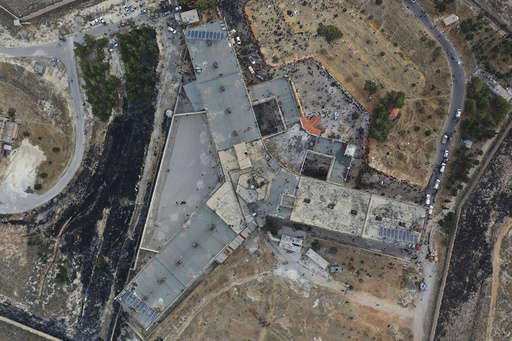SAYDNAYA, Syria — A large number of people from across Syria have converged on Saydnaya Prison, an infamous site with a dark history, following the downfall of former President Bashar Assad. Nicknamed “the slaughterhouse,” this prison is known for its brutal treatment of detainees, and many are now searching for missing relatives who were presumed incarcerated there for many years.
For two days, families have been desperately exploring the prison in the hope of finding loved ones who vanished within its walls. As they opened the heavy iron doors that line the corridors, they encountered empty cells. Armed with sledgehammers, shovels, and drills, men attempted to break through floors and walls, hoping to unearth hidden dungeons or hear sounds of those confined below. Unfortunately, their efforts yielded no results.
On Sunday, as the insurgents captured Damascus, numerous prisoners were released from Saydnaya. However, since that event, the number of found inmates has been minimal, raising concerns among families about the whereabouts of their loved ones. Ghada Assad, one such anguished family member, expressed her sorrow and confusion as she sought her brother who had been held since 2011, the year protests against Assad’s regime first erupted. With tears streaming down her face, she lamented the years of searching, hoping for a reunion as the insurgents reclaimed her original hometown of Aleppo.
Civil defense officials expressed their bewilderment as well; many could not understand why further detainees were not being discovered. It was noted that recent weeks had seen a decline in the number of inmates held in the prison. Nevertheless, the grim reputation of Saydnaya continued to inspire a collective loss and longing among those seeking closure regarding their missing loved ones.
Throughout Assad’s rule, particularly after the start of the protests, many individuals were taken to Saydnaya for even the slightest hint of dissent, leading to the grim estimation by Amnesty International in 2017 that between 10,000 and 20,000 individuals were being held there at the time, facing what was described as near extermination. Evidence pointed to many being subjected to extreme torture, severe beatings, sexual violence, and frequent executions.
Khairiya Ismail, a mother of two sons who were detained during the protests, articulated the tragedy felt by many, highlighting that no home in Syria was untouched by loss as families grieved for their disappeared. An estimated 150,000 individuals have either been detained or gone missing since 2011, with Saydnaya recognized as a central location in this crisis.
Despite the overwhelming despair, many remained determined to search for the missing, clinging to any glimmer of hope they could find. Ghayath Abu al-Dahab, a spokesperson for the search and rescue team known as the White Helmets, mentioned that the organization had been gathering information and materials to aid in the search. They even utilized the prison’s electrician to navigate through the complex, yet answers remained elusive.
At the site, continuous efforts to unearth concealed areas persisted. Groups of men worked to pry open metal gates or uncovered supposed entrances to hidden dungeons, driven by collective determination. However, each search unveiled more emptiness, giving way to unfathomable disappointment.
Following days of searching, a brief protest erupted within the prison yard, with men demanding to see the prison warden, while social media calls rallied for anyone with information about hidden cells to step forward. Among those who had been freed, Firas al-Halabi shared his harrowing experiences while detained at the prison. He vividly recounted living in horrific conditions, suffering from constant beatings and various forms of torture.
As dusk fell on Monday, rescue teams introduced an excavator in an attempt to search deeper. However, as the night wore on, the White Helmets announced the end of their operation, stating that they had not discovered any concealed areas in the facility. Their declaration reverberated with disappointment, reflecting the collective grief of the families still yearning for answers regarding the fates of thousands still missing.


